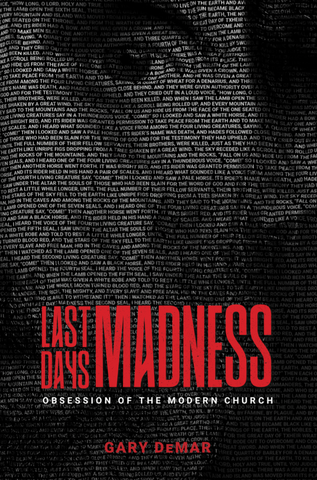Please help us reach $10K in donations for a matching grant
Bible Prophecy Under the Microscope-Episode 30
There are many signs mentioned throughout the NT by Jesus and others that are said to come during the “last days.”
Why did Jesus treat the first-century generation of Jews so harshly? Why was their generation destined for destruction? They made up the generation that had to make a choice either to accept or reject the promised Messiah who “became flesh and dwelt among” them (John 1:14). Certainly every generation must make a decision about Jesus. But no other generation will ever have the chance to turn Him over to the Romans to be crucified. Jesus “came to His own, and those who were His own did not receive Him” (John 1:11). No other generation will be given such an opportunity. The Lord of glory was in their midst, and they crucified Him, choosing a murderer in place of God’s only begotten Son (Matt. 27:20-26; Acts 3:14-15). The following verses are biblical descriptions of “this generation,” that is, the generation that Jesus addressed:
• They were “sons of those who murdered the prophets” (Matt. 23:31).
• The measure of their fathers’ guilt was filled up with their generation (23:32).
• They were “serpents” and a “brood of vipers” who would not “escape the sentence of hell” (23:33).
• They will “scourge,” “persecute,” “crucify,” and “kill” some of the “prophets and wise men and scribes” that Jesus will send (23:34).
Of course, these indictments had been heard before. During the ministry of John the Baptist these same men were described as a “brood of vipers” who had heard of a “wrath to come,” a wrath they thought they could escape in the baptismal waters of the Jordan River (3:7).
“But to what shall I compare this generation? It is like children sitting in the market places, who call out to other children, and say, ‘We played the flute for you, and you did not dance; we sang a dirge, and you did not mourn.’ For John came neither eating nor drinking, and they say, ‘He has a demon!’ The Son of Man came eating and drinking, and they say, ‘Behold, a gluttonous man and a drunkard, a friend of tax-gatherers and sinners!’ Yet wisdom is vindicated by her deeds.” Then He began to reproach the cities in which most of His miracles were done, because they did not repent. “Woe to you, Chorazin! Woe to you, Bethsaida! For if the miracles had occurred in Tyre and Sidon which occurred in you, they would have repented long ago in sackcloth and ashes” (11:16-21).
Not long after this pronouncement of judgment the religious leaders accused Jesus of being in league with Satan because He cast out demons (12:24). Jesus once again called them a “brood of vipers” (12:34). They were “condemned” by their words (12:37). The scribes and Pharisees asked for a sign (12:38), and Jesus informed them that “an evil and adulterous generation craves for a sign” (12:39). Jesus warned the unregenerate of His day that “the men of Nineveh shall stand up with this generation at the judgment, and shall condemn it because they repented at the preaching of Jonah” (12:41).
Judgment was certain to come upon “this generation” because “something greater than Jonah is here” (12:41). Jesus compared “this generation” to that of “unclean spirits” who occupy a man’s house, exacerbating the man’s spiritual condition. “That is the way it will also be with this evil generation,” Jesus said (12:45). This all took place in one of their synagogues (12:9). Is this the “house” that will be occupied by “unclean spirits,” which the book of Revelation describes as a “synagogue of Satan” (Rev. 2:9)?

Last Days Madness
In this authoritative book, Gary DeMar clears the haze of "end-times" fever, shedding light on the most difficult and studied prophetic passages in the Bible, including Daniel 7:13-14; 9:24-27; Matt. 16:27-28; 24-25; Thess. 2; 2 Peter 3:3-13, and clearly explaining a host of other controversial topics.
Buy NowThere are many signs mentioned throughout the NT by Jesus and others that are said to come during the “last days.” Many writers and prophetic speculators have claimed that these signs are happening all around us today. Unfortunately for them, the context for these biblical signs was “soon,” as in soon when the NT was written—that is, in the first century AD.
Click here for today’s episode
Click here for all episodes of Bible Prophecy Under the Microscope

